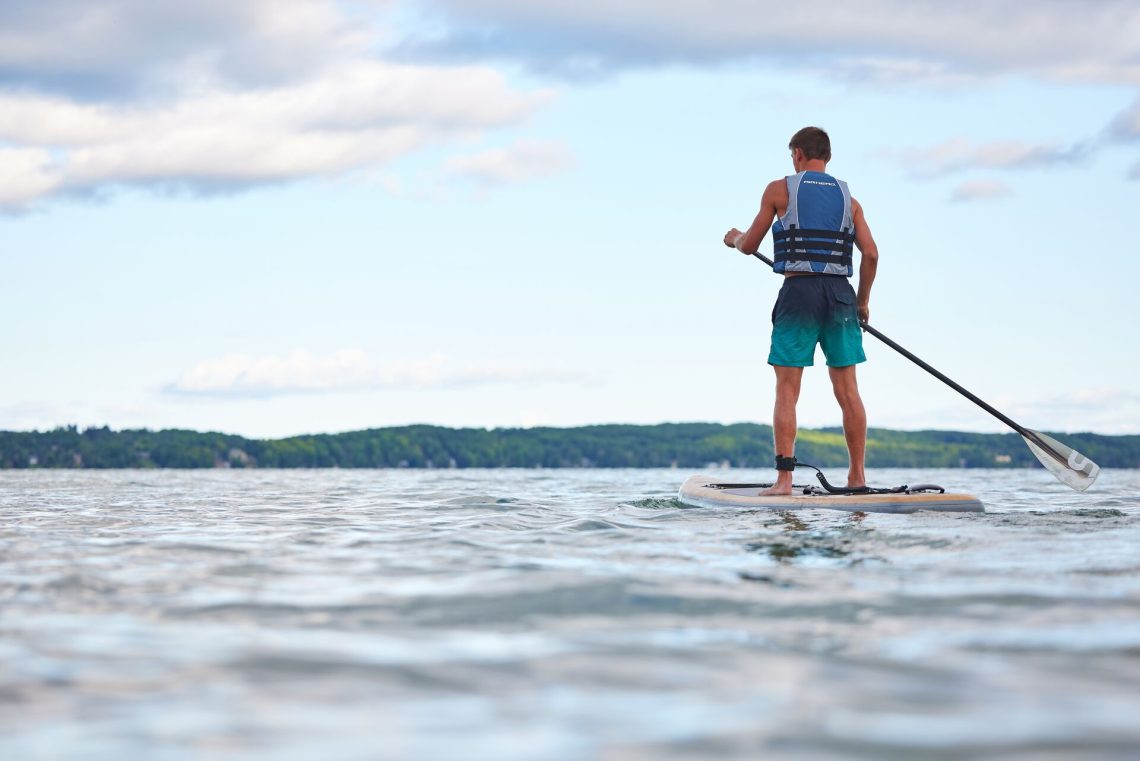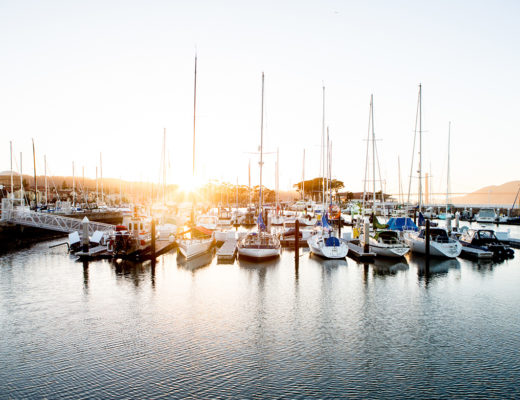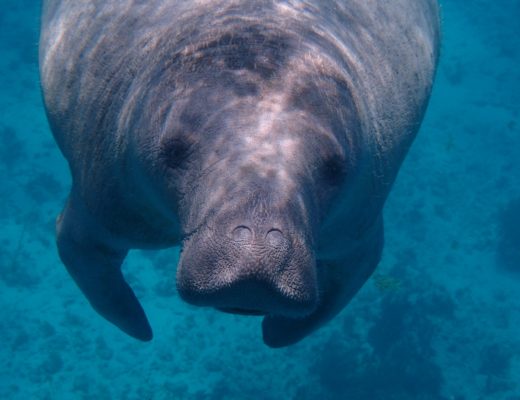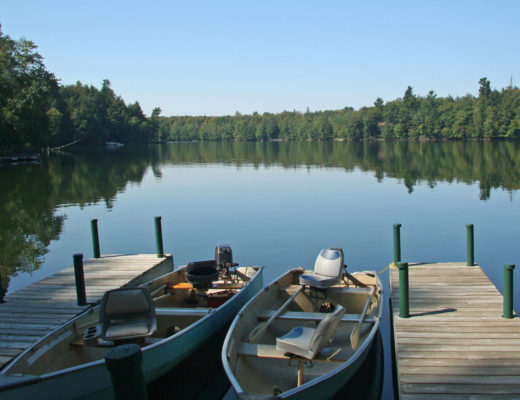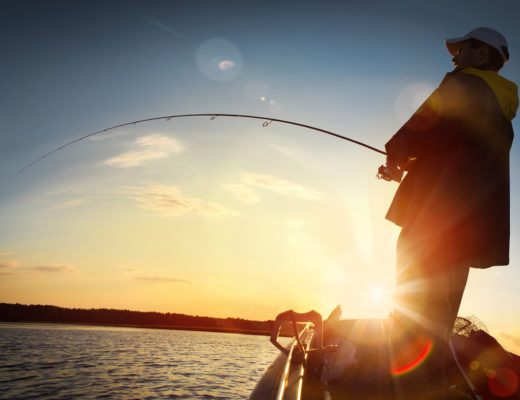At BOATsmart!, we’re all about having lots of fun on the water, and we’re all about doing so safely.
In the Golden State, water is everything. California has miles upon miles of stunning beachfront and waterfront, with over 1,000 miles of lakes and oceans to explore. There’s simply no shortage of water fun waiting for California boaters and swimmers. The sheer amount of water activities available to Californians makes it an instant favorite for water aficionados like us.
While nothing compares to boat days, jet ski excursions, and floating in the water, none of it matters without a focus on safety at every point. One of the most vital parts of water safety that no one should forget is the importance of wearing a life jacket — better known as a good life jacket — every time you are out on the water.
Here is everything you need to know about California’s life jacket laws.
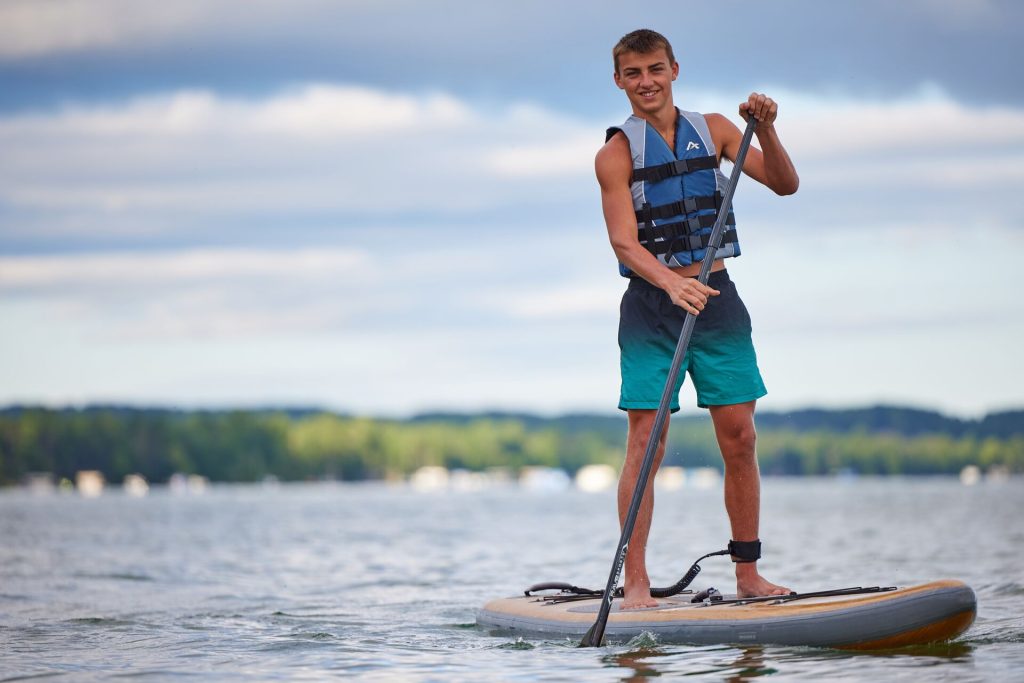
Who is Required to Wear a Life Jacket in California?
While we recommend that everyone wears a life jacket while on a boat or participating in water activities, California life jacket law requires the following people to wear them:
- Anyone Under 13: According to California state law, every person under 13 years of age must wear a life jacket on any recreational vessel. It must be a Coast Guard-approved life jacket appropriate for the activity that they are engaging in.
- While Operating Motorcraft: Every person on a water ski, operating a personal watercraft, or being towed behind a vessel must also wear a life jacket.
- On Boats 16 feet or Less in Length: This includes canoes and kayaks of any length. Coast Guard-approved life jackets must be carried for each person on board, and each person must be made aware of the location of life jackets.
- On Boats 16 feet or Longer: On vessels longer than 16 feet, there must be at least one Type IV throwable device designed for throwing into the water and a life jacket for each person onboard.
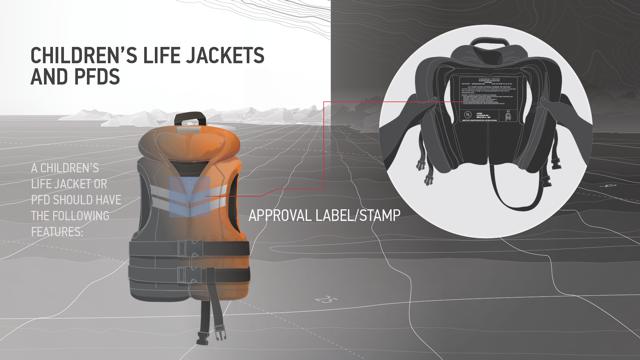
Exceptions to California Life Jacket Laws
Children under 13 are exempt from wearing a life jacket if they are on a harness tethered to a sailboat, in an enclosed boat cabin, or on an emergency vessel.
Those using underwater maneuvering devices are also exempt from wearing a life jacket in California.
Why Should I Wear Life Jackets in California?
While everyone may not legally be required to wear a life jacket in California, safety advantages exist. Even the best swimmers can benefit from wearing a life jacket if the current, temperature, or hidden hazards change.
According to the National Park Service, the top cause of death in national parks is drowning, with most drowning deaths occurring near the shore and close to a life jacket. The NPS recommends that everyone wear a life jacket, regardless of the water activity. By ignoring safety precautions, you put yourself and others at risk.
Additionally, if you bring your pup on board, make sure it is also protected with a life jacket. Animal life jackets are an excellent investment for your pet and the best way to keep them safe on the water.
Fines for Non-Compliance and Enforcement
In the state of California, life jacket violations are considered infractions. Violators can be fined up to $250.
In California, the Division of Boating and Waterways’ Enforcement Unit enforces laws on the water. From checking for Boater Cards to enforcing life jacket laws, the Enforcement Unit is nearby to keep California boaters and swimmers safe and in compliance with the law.
What Are the Life Jacket Requirements in California
California’s life jacket laws require wearers to use Coast Guard-approved life jackets, which must be available to each boat passenger. Appropriate life jackets should be the right size for the wearer and maintained in good condition.
Everyone on board should feel confident in the integrity of the life jackets available to them.
What Are the Different types of Life Jackets?
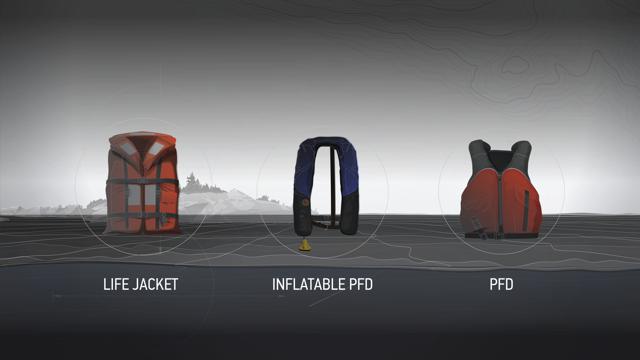
Life jackets or personal floating devices (PFDs) in the states come under several classifications, which have changed and evolved over time.
While the classification process is now different, life jackets classified by type are still allowed and approved by the Coast Guard as long as they’re in good condition.
Common (or “Old”) Life Jacket Terminology
By knowing the different types of classifications, you’ll be able to pick out the perfect life jacket for you and your needs. However, in the U.S., you might know life jackets by the “old” terminology. It’s important to know the old and new terms to ensure you’re choosing the right PFD for your water activity.
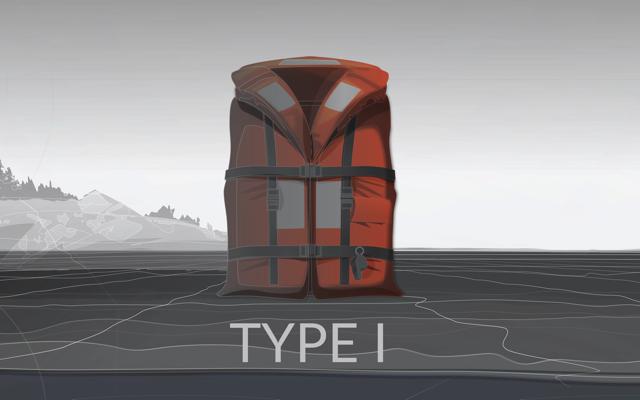
Type I PFDs (Inherently Buoyant)
Type I Personal Flotation Devices are good for every kind of water condition, from the calmest of waves to the roughest of waters. Their bulkier build makes them incredibly buoyant.
When wearing a Type I PFD, most unconscious individuals will be turned face-up.
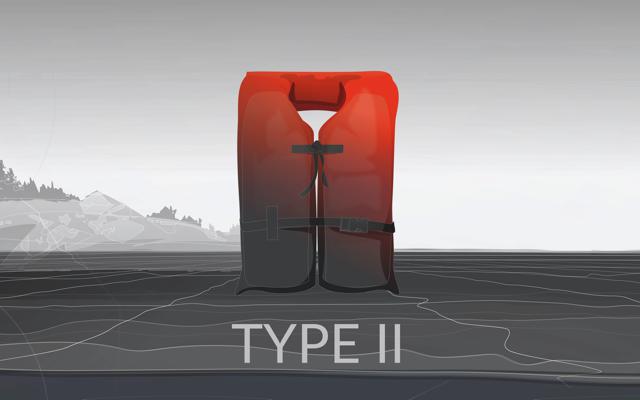
Type II PFDs (Near-Shore Buoyant Vests)
Type II PFDs are meant for boating near shore in locations with a high chance of a quick rescue. They are also wearable for long days of water and land adventures, remaining buoyant while not being super bulky.
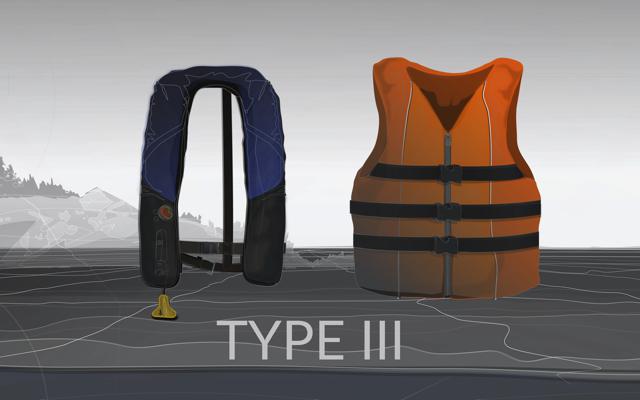
Type III PFDs (Flotation Aids)
Also known as inshore buoyant vests, Type III PFDs are meant for situations in which the wearer can see the shore and the waters are relatively calm. They are designed with water sports, swimming, and recreational boating activities in mind.
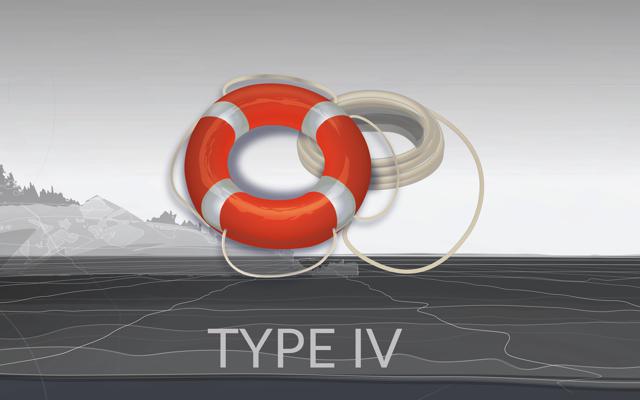
Type IV PFDs (Throwables)
Type IV PFDs aren’t life jackets but are designed to be thrown to a person needing rescue in the water. These devices include a buoyant ring or a life ring.
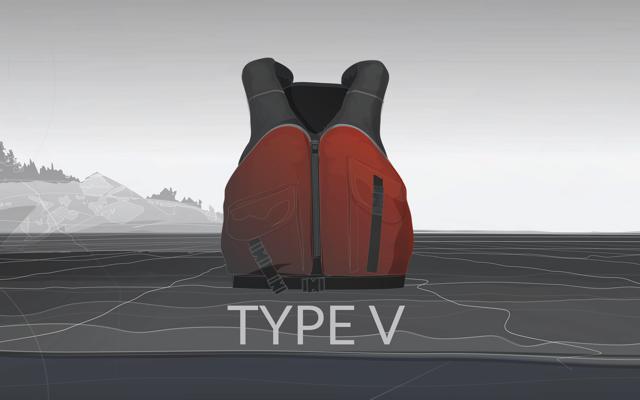
Type V PFDs (Special-Use Devices)
Type V PFDs are specially designed for specific uses.
From devices used to prevent hypothermia or rescue operations to those meant for kayaking, Type V PFDs must be used according to their specifications.

What Is the New Life Jacket Terminology for the U.S.?
The new U.S. classification system for life jackets relies on performance categories.
- Inherent Life Jackets: These devices are always buoyant (usually made of foam) and meant to float immediately without any action required by the wearer.
- Inflatable Life Jackets: These devices inflate with air when activated by the wearer. Inflatables come in a variety of performance levels but are never recommended for weak or children, non-swimmers, or anyone on personal watercraft.
- Hybrid or Multi-Chamber Devices: These devices combine inherent materials like foam with an inflatable chamber. They perform with full buoyancy without inflation. Then, inflation adds additional performance, sometimes even including turning and freeboard.
- Special Purpose: These PFDs are meant for specific activities or restricted circumstances and often require extra training or action by the wearer. This classification has extra buoyancy for whitewater rafting or providing inflatable belt pouches, additional visibility, or manual inflation devices.
Look for New Label Icons
New life jacket labels feature an icon and number to indicate the intended conditions for use. The numbers range from Level 50 to Level 275. Smaller-level life jackets are intended for use in close-to-shore scenarios and calm water. Higher-level life jackets are ideal for rougher waters and situations where rescue may take longer.
- Level 50: These jackets are recommended for users who have strong swimming skills. They are best for close-to-shore scenarios where immediate assistance is available.
- Level 70: This performance level is best for calm or sheltered waters close to shore and where help is nearby. It will not turn the wearer’s face up in the water.
- Level 100: A life jacket with this rating is also recommended for use in calm waters. However, it will provide enough flotation that the wearer will have more time to wait for rescue.
- Level 150: Devices of this performance level are more buoyant, okay for use in off-shore scenarios, and will turn the wearer face up in the water.
- Level 275: These devices with a 275 performance rating are the most buoyant and are designed for offshore emergency rescue situations. They can be used by rescue crews because they can handle the additional weight of tools, equipment, or clothing.
New life jacket labels will also feature a warning panel with important information about the device and its intended use. The panel will also indicate activities that are not recommended for the device’s performance level.
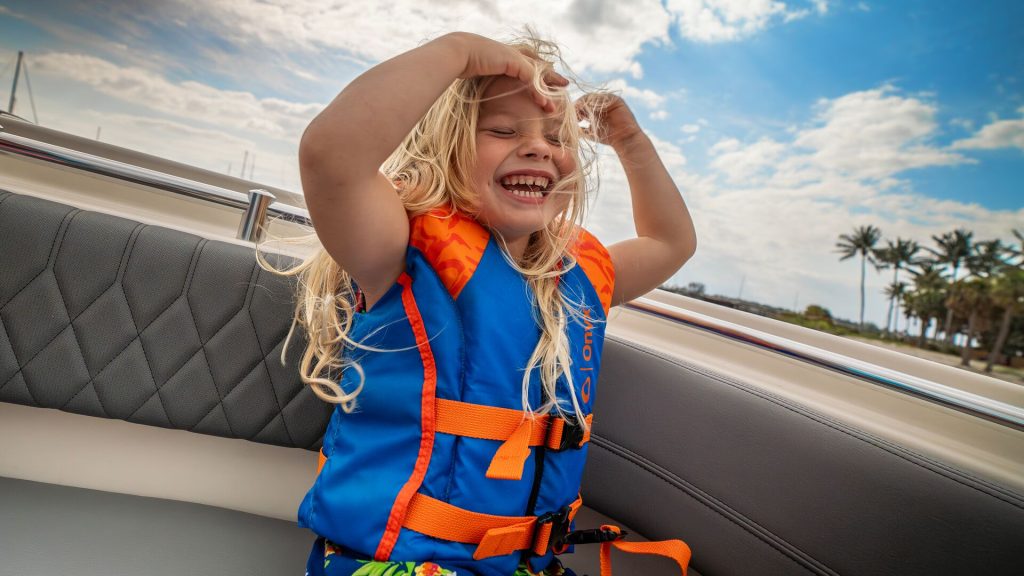
How to Find the Right Life Jacket Fit
An ill-fitting life jacket could fail you when needed most.
Life jackets should be snug, comfortable, adjustable, and unable to rise above the wearer’s ears. Each person should wear a life jacket meant for their weight, size, and body type. It should also be of the right type of life jacket for the day’s water activities.
Follow these tips to find the right fit:
- Put on a life jacket, then make sure all pieces are fastened and zipped loosely. You’ll adjust it from there.
- Zip up the life jacket. Tighten it from the bottom first and work your way up. Make sure that the bottom clasp is snapped in place.
- Adjust each side adjustment for a snug fit. Keep the sides even so that the jacket doesn’t ride up on one side.
- Tighten the shoulder straps last.
Once adjusted, raise your hands above your head. If a life jacket comes up above your chin or feels incredibly tight, trade it for another size. The wearer should be able to comfortably move in the life jacket.
If possible, do a fit test in the water. Float on your back and make sure the life jacket doesn’t ride up or slip over your head while keeping you afloat.
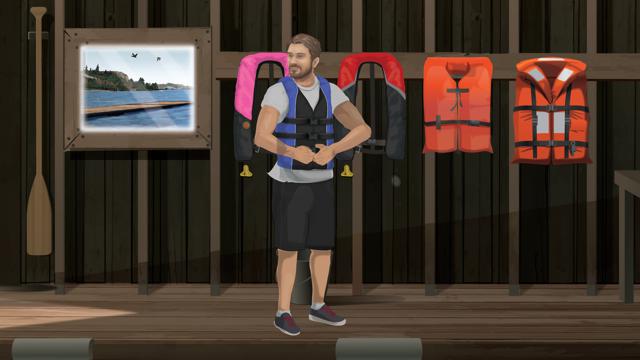
How to Take Good Care of Your Life Jacket
In addition to following California’s life jacket laws, it’s crucial to take good care of life jackets so they can take good care of you.
If you store and maintain your life jackets, they can last you for many seasons.
Be sure to:
- Wipe life jackets down with a gentle cleanser specifically made for life jackets after use.
- Let them drip dry, then store them in a well-ventilated area.
- Check life jackets each season for any loose fastenings or rips.
Note: Avoid laying jackets in direct sunlight or heat, as this can eventually affect their buoyancy.
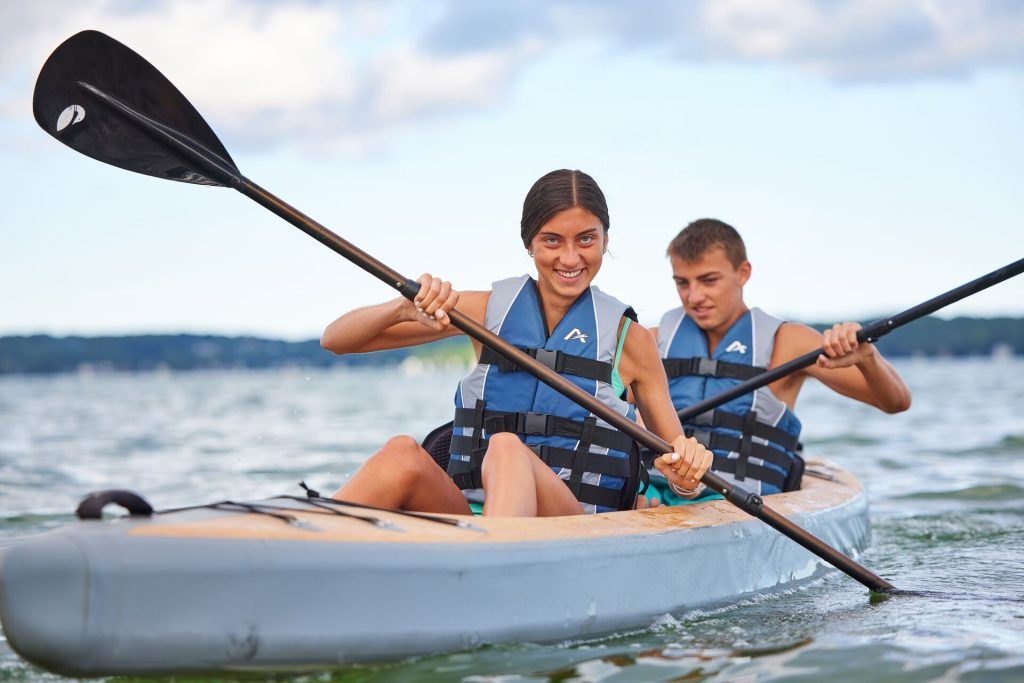
Prioritize Safety When Boating in California
Safety is everything to us at BOATsmart! We’re to help you make sure that every boat and personal watercraft operator is legally and responsibly able to be on the water.
In addition to following life jacket laws, every California boater will be legally required to have a California Boater Card by January 2025. By using BOATsmart! for your boating safety education, you’ll be prepared for any water adventure that comes your way. You’ll also have your boater safety card to boat legally and safely in California.
Our courses deliver animated and narrated lessons to capture your attention and help you remember crucial safety information. As a Coast Guard and NASBLA-approved boating educator, we’re the best choice for an efficient, accredited, and information-packed boating safety education course.
Originally published in August 2020. Content most recently reviewed and updated for accuracy and relevancy September 9, 2024.
